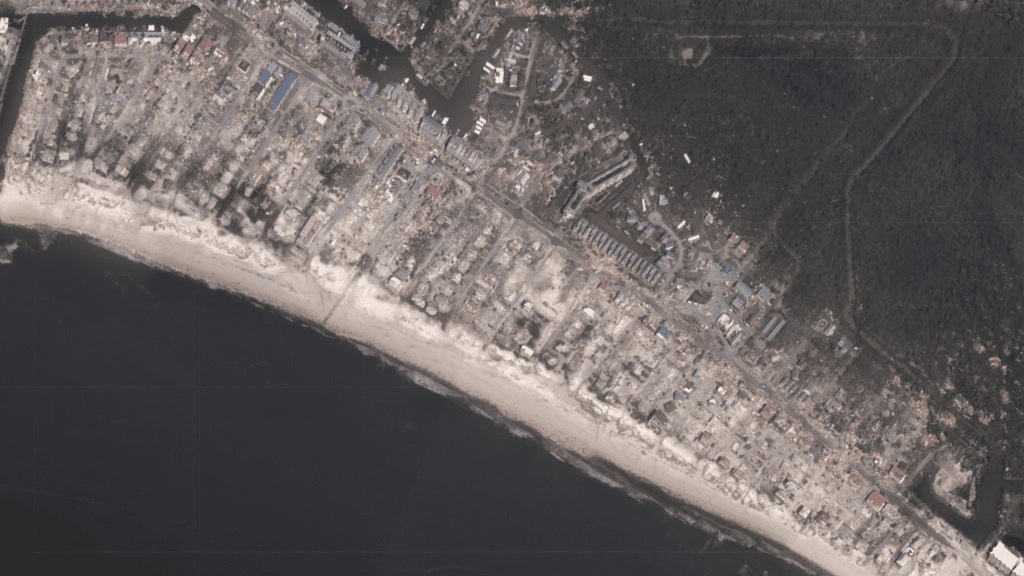Hurricane Michael was a record-setting storm: strongest hurricane to hit the Florida panhandle, third lowest land-falling hurricane according to pressure and strongest storm of the 2108 hurricane season. Michael should also be the storm where we should no longer rely on the Internet as a backup.
In the lead-up before the storm made landfall, Panama City TV stations directed their viewers to download their apps so that when they lose power, they can continue to watch continuous coverage on their phones.
“Download our app, it might save your life”, said one of the TV anchors.
This is bad advice we need to stop sending to people; using their phones to rely on important information because of the domino effect it causes.
When the power goes out, people go to their phones and start streaming video on their devices. The screen plus the wireless chip starts to drain the battery. When multiple phones start streaming video, the cell tower gets overloaded that could prevent people from using emergency services.
It gets worst if the closest cell tower to the phone goes out. Then the phone has to use more power to get a signal, even if it’s one bar.
But media companies are start to get some sense and not depend on the Internet as a backup and deplete users’ batteries. Almost all TV stations in Panama City, Florida; Dothan, Alabama and Albany, Georgia were simulcasting on radio but the force of Michael forced TV and radio stations off the air, even well inland places like southeastern Alabama and southwestern Georgia.
A new solution is needed without the Internet
Even if the best plan were implemented, never assume anything can withstand 155 mph winds. At its’ peak, five counties in Florida reported 75% of cell tower were out, 21 radio stations were out and four TV stations were down due to damage or lost of power.
Imagine after the storm has passed, you have no way of getting important information: where to put debris, can you use tap water without boiling, are health clinics opened in the event you get injured?
You can put it all on Facebook but it’s useless if people don’t have Internet and/or their phones are dead from streaming content. And the longer people are in the dark, the more lives are at stake.
One thing I’m amazed at is that wireless industry does have backup plans: they can setup portable cell towers in areas and can even use drones as cell towers to cover a larger area. You never hear about backup plans for TV and radio stations. They put batteries and radios on hurricane check lists so this isn’t an item that people ignore. Why we don’t have a frequency set aside for emergency broadcasts is a mystery. This is something you can use AM radio for as most stations are abandoning AM because of interference from LED lights. You don’t have to worry about interference because there’s no power to be interfered with.
Something that really should be a mystery is why don’t stations have the ability to setup a portable broadcast tower so that they can rely information to people. And it needs to be portable; they still make FM transmitters for cars that don’t have auxiliary input. The signal broadcast can originate from a wire, just get a balloon filled with helium and let it float.
If you say this can’t be done, then you need to look at the past.
After Hurricane Katrina, Hancock County EOC relied on a solar-power radio station that was owned by the Hancock Country Amateur Radio Relay Club and was the only station broadcasting in an area that was leveled by a 30ft storm surge. St. Tammany Parish government even seized a defunct radio and brought it back on the air.
So while you can set up portable broadcast stations, the reality is setting in that radio is no longer being used in an emergency. While both Panama City TV stations were off the air, they were providing updates on Facebook. And radio is starting to take notice that they’re no longer being the main medium during a storm. Powell Broadcasting, which owns four radio stations in Panama City, will not return to the market after sustaining “catastrophic damage” to its’ studio.
Who knows if radio will continue to be the medium to get message to people after a storm; there are phones that also have a FM radio. And cell towers are slowly coming back online – 21% of cell towers were down in Bay County was the recent report from the FCC.
But unless battery life on phones get better, we need to stop using the Internet as a back during a storm.
